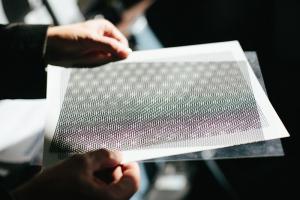Content:
It was the closest that physicist Pablo Jarillo-Herrero had ever come to being a rock star. When he stood up in March to give a talk in Los Angeles, California, he saw scientists packed into every nook of the meeting room. The organizers of the American Physical Society conference had to stream the session to a huge adjacent space, where a standing-room-only crowd had gathered. “I knew we had something very important,” he says, “but that was pretty crazy.”
The throngs of physicists had come to hear how Jarillo-Herrero’s team at the Massachusetts Institute of Technology (MIT) in Cambridge had unearthed exotic behaviour in single-atom-thick layers of carbon, known as graphene. Researchers already knew that this wonder material can conduct electricity at ultra-high speed. But the MIT team had taken a giant leap by turning graphene into a superconductor: a material that allows electricity to flow without resistance. They achieved that feat by placing one sheet of graphene over another, rotating the other sheet to a special orientation, or ‘magic angle’, and cooling the ensemble to a fraction of a degree above absolute zero. That twist radically changed the bilayer’s properties — turning it first into an insulator and then, with the application of a stronger electric field, into a superconductor.
Graphene had previously been cajoled into this behaviour by combining it with materials that were already known to be superconductors, or by chemically splicing it with other elements. This newfound ability to induce the same properties at the flick of a switch turned heads. “Now you put two, non-superconducting atomic layers together in a certain way and superconductivity pops up? I think that took everyone by surprise,” says ChunNing Jeanie Lau, a physicist at the Ohio State University in Columbus.
Physicists at the meeting were even more excited because of the way in which a graphene bilayer seems to become a superconductor. There were hints that its remarkable properties arose from strong interactions or ‘correlations’ between electrons — behaviour that is thought to underlie bizarre states of matter in more-complex materials. Some of those materials, namely ones that superconduct at relatively high temperatures (although still well below 0 °C), have baffled physicists for more than 30 years. If superconductivity in simple graphene is caused by the same mechanism, the material could be the Rosetta stone for understanding the phenomenon. That, in turn, could help researchers to engineer materials that superconduct close to room temperature, which would revolutionize many areas of modern technology, including transportation and computing.
“Immediately I could see pretty much everyone I know become really excited,” says Lau. But while she listened in amazement to the talk, others couldn’t wait. Andrea Young, a condensed-matter physicist at the University of California, Santa Barbara, had left the meeting to rush back to his laboratory. His team was one of a handful around the world already exploring twisted graphene, looking for hints of recently predicted strange behaviour. Young scanned the Nature papers1,2 from the MIT group, which were published two days ahead of the talk, and found what he needed to know to replicate the experiment. That turned out to be harder than anticipated. But by August, having joined forces with a group at Columbia University in New York City led by physicist and friend Cory Dean, he and his team succeeded3. “We had reproduced it many times ourselves,” says Jarillo-Herrero. But having the confirmation of a second group, he says, “was tremendously reassuring”.


